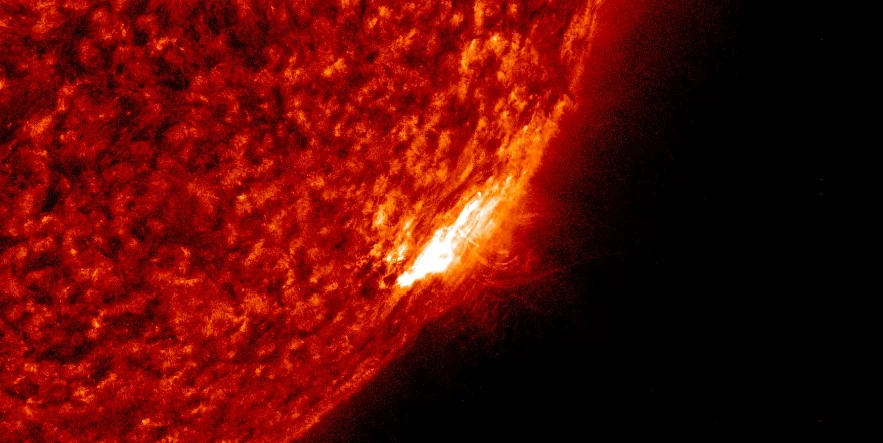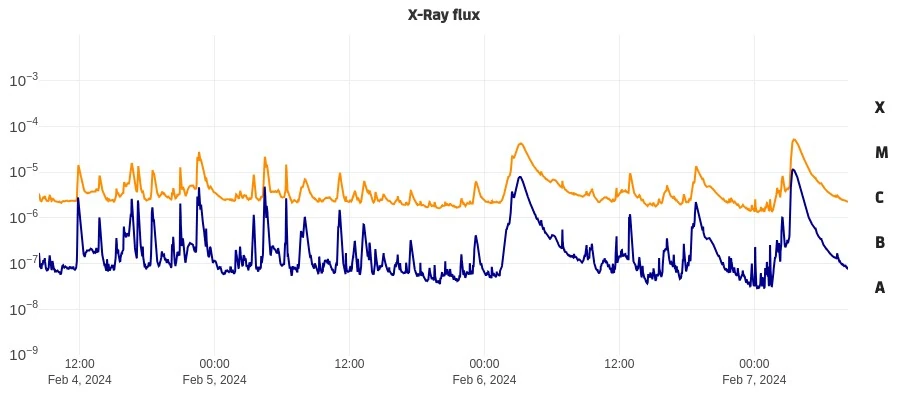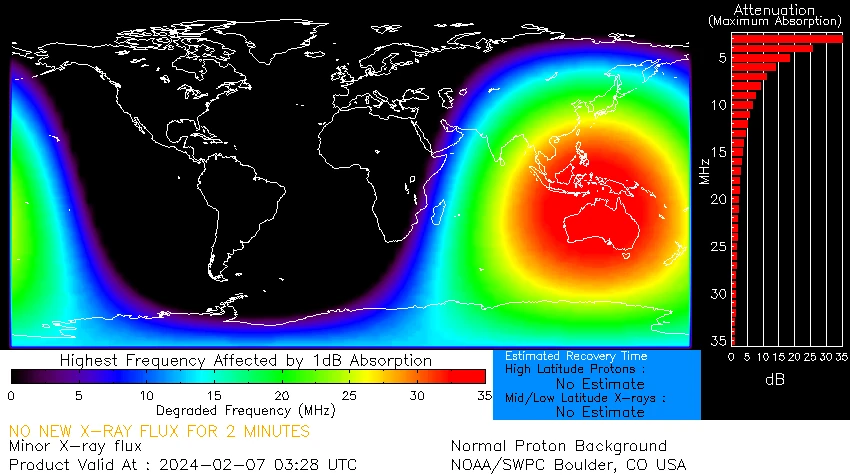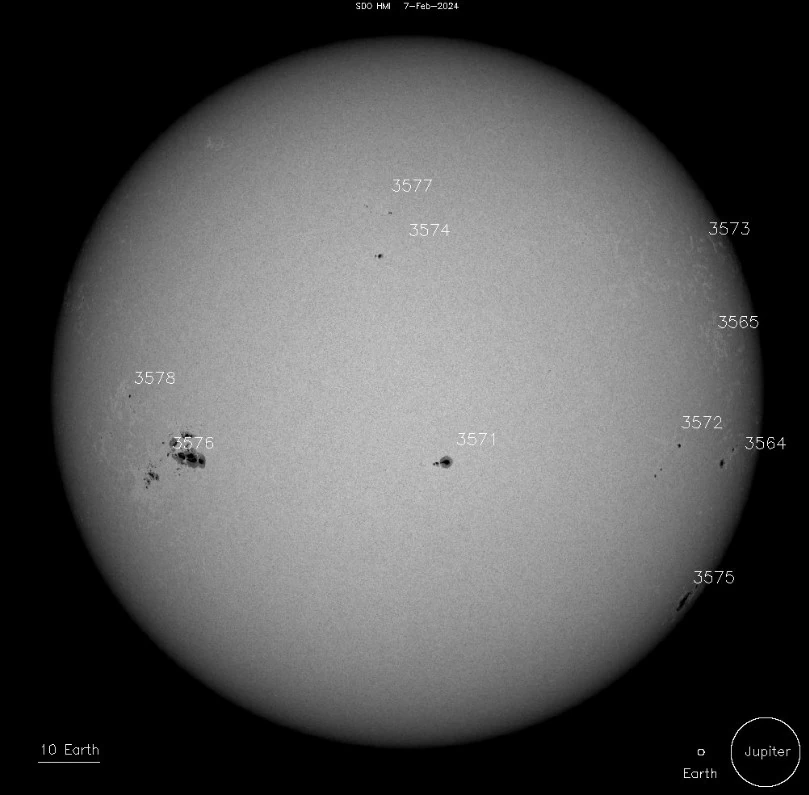Long-duration M5.1 solar flare erupts from Region 3575

A long-duration M5.1 solar flare erupted from Active Region 3575 at 03:31 UTC on February 7, 2024. The event started at 03:04 and ended at 04:11 UTC. The flare follows M4.2 from the same region at 03:12 UTC on February 6.
A 10cm Radio Burst (tenflare) lasting 42 minutes and with a peak flux of 390 sfu was associated with the event, indicating that the electromagnetic burst associated with a solar flare at the 10cm wavelength was double or greater than the initial 10cm radio background. This can be indicative of significant radio noise in association with a solar flare. This noise is generally short-lived but can cause interference for sensitive receivers including radar, GPS, and satellite communications.
Radio frequencies were forecast to be most degraded over Australia and SE Asia at the time of the flare.




Solar activity was at moderate levels in 24 hours to 00:30 UTC on February 7. Region 3575 (S36W78, Dki/beta-gamma-delta) was the main source of activity producing a few M-class flares.
The most notable of these were M2.2 at 02:27 UTC and M4.2 solar flare at 03:12 UTC on February 6. This event came with associated type II and IV radio sweeps, and the resulting CMEs were first seen in NASA LASCO C2 coronagraph imagery at approximately 02:36 UTC. Modeling of this event suggests that a bulk of the material will miss south and ahead of Earth’s orbit, but some shock and periphery-like influences may take place late on February 9, according to the SWPC.
Region 3576 (S16E46, Fki/beta-gamma-delta) grew slightly as it exhibited decay in its intermediate spots, and produced C-class flares. The remaining active regions were mostly stable and relatively quiet in comparison.


Other notable CMEs included a full halo event first seen in coronagraph imagery around 12:00 UTC on February 6, and a slow, narrow northerly CME at 13:36 UTC. The halo event seemingly originated from the far side of the Sun given the lack of radio sweeps, or other common signatures for an event of its magnitude. The northerly CME is most likely associated with a filament eruption centered near N48E10 beginning at approximately 08:12 UTC, as observed in GOES SUVI 304 angstroms.
Modeling of this event seems to suggest a miss north of Earth, but additional analysis is needed to confirm, SWPC forecasters said.
Looking ahead, solar activity will likely continue at moderate levels with occasional M-class flares and a chance for an isolated X-class flare on February 7. Probabilities will decrease to a chance for M-class flares, and a slight chance for X-class flares, on February 8 as Region 3575 exits the SW limb.
The greater than 10 MeV proton flux became slightly enhanced to near 1 pfu following the M4.2 flare, but remained well below the S1 – Minor threshold, and has nearly returned to background levels. The greater than 2 MeV electron flux was at normal to moderate levels.
There is a chance for an S1 – Minor solar radiation event on today primarily due to the flare potential and location of Region 3575. A slight chance will remain thereafter. The greater than 2 MeV electron flux is expected to continue at normal to moderate levels through February 9.
The solar wind environment remained slightly disturbed primarily due to positive polarity coronal hole high speed stream (CH HSS) influences. The total field gradually decreased from 9 nT to 6 nT, and the Bz component was mostly northward or near neutral. Solar wind speeds remained somewhat steady, averaging between ~430 km/s and ~520 km/s. Phi was predominantly in a positive solar sector.
HSS influence is expected to persist through February 7, followed by a return to nominal solar wind conditions on February 8 and 9.
The geomagnetic field was mostly quiet over the past 24 hours, with an isolated unsettled period at the beginning of the UTC day. Quiet to unsettled levels are expected to continue through February 7 before tapering off to quiet conditions through February 8.
Unsettled to active levels are expected on February 9 with any shock arrival from the February 6 events. Otherwise, mostly quiet levels will persist.
References:
1 Forecast Discussion – Issued: 2024 Feb 07 0030 UTC – Prepared by the U.S. Dept. of Commerce, NOAA, Space Weather Prediction Center
Featured image credit: NASA/SDO AIA 304, Helioviewer, The Watchers. Acquired at 03:20 UTC on February 7, 2024


Commenting rules and guidelines
We value the thoughts and opinions of our readers and welcome healthy discussions on our website. In order to maintain a respectful and positive community, we ask that all commenters follow these rules.